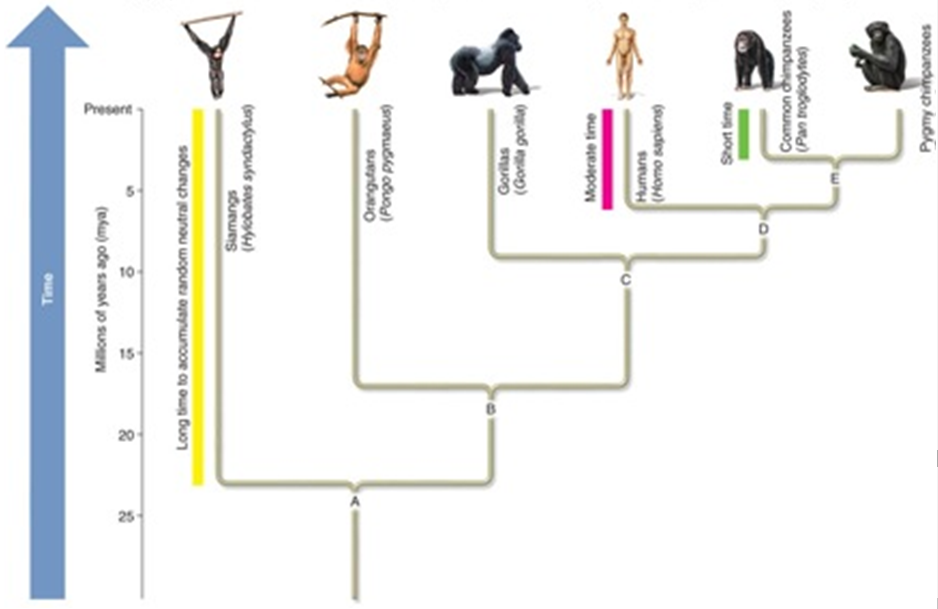The study and reconstruction of phylogenies is
A. evolution.
B. systematics.
C. taxonomy.
D. cladistics.
E. taxidermy.
Answer: B
You might also like to view...
The above Figure 26.13, shows a simplified phylogeny of closely related species of primates. This tree was proposed by comparing DNA sequence changes in the gene for cytochrome oxidase subunit II. The vertical scale represents time and the branch points represent common ancestors. What species did ancestor B give rise to?

A. Siamangs and orangutans.
B. All of the species except orangutans.
C. All of the species except siamangs.
D. All of the species except siamangs and pigmy chimps.
E. Gorillas, humans, and both types of chimps.
You are a forester for the Wisconsin Department of Natural Resources and have been sent to Costa Rica to help treat a fungal disease that is killing many trees. Part of your data collection includes the aging of trees that have been killed by the fungus. Explain why the methods for aging trees in Wisconsin may not work well in Costa Rica
What will be an ideal response?
Degranulation of mast cells leads to
A. lymph node swelling. B. constricted bronchioles. C. constriction of blood vessels. D. decreased mucus production.
The bulk of the energy required by the eukaryotic cell is generated by the mitochondria. The mitrochondrion consists of cristae that
A) form a smooth, continuous outer membrane surrounding the entire organelle. B) form a complex fluid called a matrix outside the organelle. C) are elaborate folds on the inner membrane which hold the enzymes and electron carriers of aerobic respiration. D) are circular strands of DNA involved in producing the enzymes needed for anaerobic respiration.